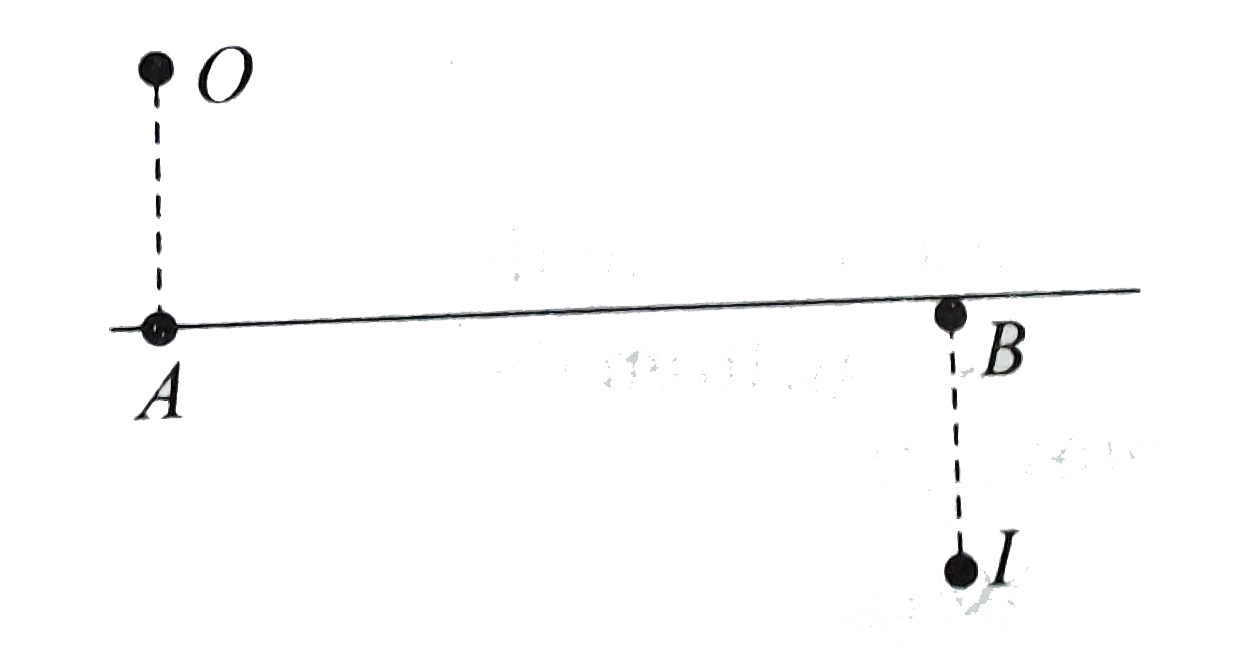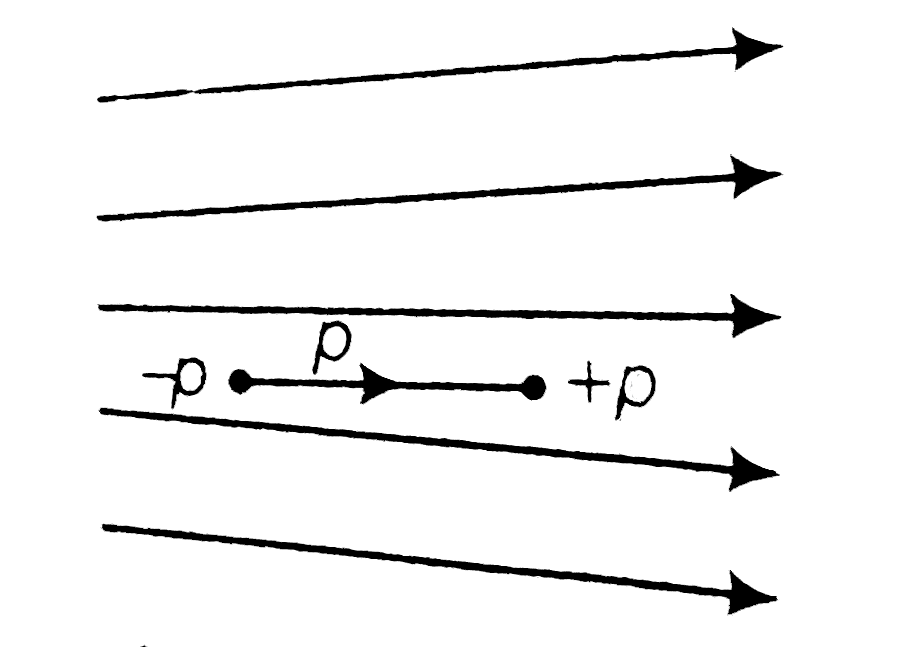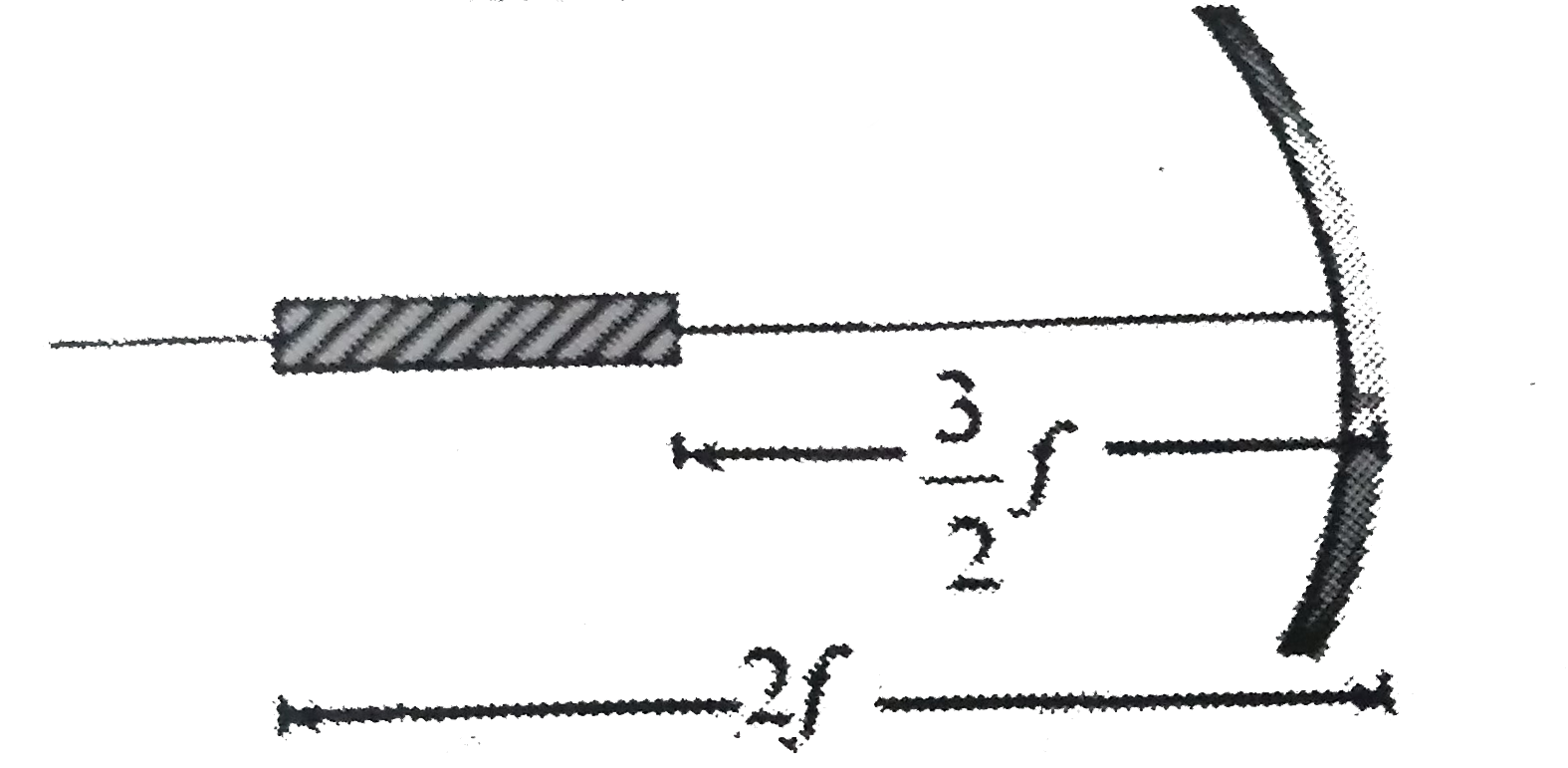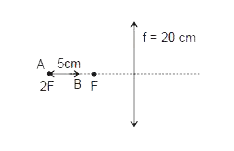A luminous point object is placed at O, whose image is formed at I as shown in Figure. Line AB is optical axis. Which of the following statement is/are correct?

If a lens is used to obtain the image, then it must be a converging lens and its optical center will be the intersection point of line AB and OI
If a lens is used to obtain the image, then it must be a diverging lens and its optical center will be the intersection point of line AB and OI
If a mirror is used to obtain the image, then the mirror must be concave and the object and image subtend equal angles at the pole of the mirror.
I is a real image
The correct Answer is:a., c., d

Image is inverted, so its should be real.
Topper's Solved these Questions
- BOOK - CENGAGE PHYSICSCHAPTER - GEOMETRICAL OPTICSEXERCISE - Assertion-Reasoninig2videos
GEOMETRICAL OPTICS
- BOOK - CENGAGE PHYSICSCHAPTER - GEOMETRICAL OPTICSEXERCISE - Linked Comprehension51videos
GEOMETRICAL OPTICS
- BOOK - CENGAGE PHYSICSCHAPTER - GEOMETRICAL OPTICSEXERCISE - Subjective26videos
GEOMETRICAL OPTICS
- BOOK - CENGAGE PHYSICSCHAPTER - FRICTIONEXERCISE - QUESTION BANK1videos
FRICTION
- BOOK - CENGAGE PHYSICSCHAPTER - GRAVITATIONEXERCISE - Question Bank39videos
GRAVITATION
Similar Questions
Knowledge Check
- Question 1 - Select One
A luminous point object is placed at O, whose image is formed at I as shown in the figure. AB is the optic axis. Which of the following statements are correct ?
 AIf a lens is used to obtain image, the lens must be converging.BIf a mirror is used to obtain image, the mirror must be a convex mirror having pole at the point of intersection of lines OI and AB.CPosition of principal focus of mirror cannot be found.DI is real image.
AIf a lens is used to obtain image, the lens must be converging.BIf a mirror is used to obtain image, the mirror must be a convex mirror having pole at the point of intersection of lines OI and AB.CPosition of principal focus of mirror cannot be found.DI is real image. - Question 2 - Select One
A cyclic process is shown in the figure. For the process AB which of the following statement is correct ?
 AHeat given to the system will be always −ve throughout the processBHeat given to the system will be always +ve throughout the processCFirst the heat given is +ve then −veDFirst the heat given is −ve then +ve
AHeat given to the system will be always −ve throughout the processBHeat given to the system will be always +ve throughout the processCFirst the heat given is +ve then −veDFirst the heat given is −ve then +ve - Question 3 - Select One
I is the image of a point object O formed by spherical mirror, then which of the following statements is incorrect :
AIf O and I are on same side of the principal axis, the they have to be on opposite sides of the mirror.BIf O and I are on opposite side of the principal axis, then they have to be on same side of the mirror.CIf O and I are on opposite side of the principal axis, then they can be on opposite side of the mirror as well.DIf O is on principal axis then I has to lie on principal axis only.
Figure shows electric field lines in which an electric dipole P is placed as shown. Which of the following statements is correct?
 View Solution
View SolutionFigure shows electric field lines in which an electric dipole p is placed as shown. Which of the following statements is correct ?
 View Solution
View SolutionA linear object is placed along the axis of a mirror as shown in figure. If 'f' is the focal length of the mirror then the length of image is-
 View Solution
View SolutionA lens forms a virtual, diminished image of an object placed at 2m from it. The size of image is half of the object. Which one of the following statements is correct regarding the nature and focal length of the lens ?
View SolutionA lens forms a virtual, diminished image of an object placed at 2m from it. The size of image is half of the object. Which one of the following statements is correct regarding the nature and focal length of the lens?
View Solution


